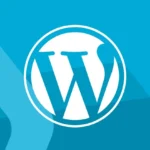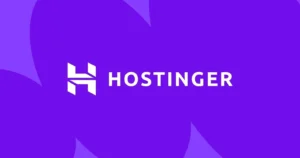What is a WordPress Template? (Theme Files, FSE, Patterns Explained)
The terms “theme” and WordPress Template are often used interchangeably in WordPress discussions, but they represent different concepts crucial for understanding how WordPress Templates and themes shape website structure and design. A theme controls the overall look and feel of your entire site, while a WordPress Template typically refers to the layout of a specific page type or section within that theme. Understanding the different kinds of WordPress Templates available, especially with the advent of Block Themes and Full Site Editing (FSE), helps unlock greater customization potential.
Read also : InMotion Hosting Review
Table of Contents
- Types of Templates in WordPress Explained
- 1. Theme Template Files (Classic Themes)
- 2. Page Templates (Classic & Block Themes)
- 3. Block Templates (Full Site Editing / Block Themes)
- 4. Template Parts (Full Site Editing / Block Themes)
- 5. Block Patterns
- 6. Page Builder Templates
- Custom WordPress Templates & Themes by WebDest
- Conclusion: Leveraging Templates for Better WordPress Sites
Types of Templates in WordPress Explained
Here’s a breakdown of the various “templates” you’ll encounter:
1. Theme Template Files (Classic Themes)
These are the foundational PHP files within a traditional WordPress theme folder (e.g., `wp-content/themes/your-theme/`). Examples include:
index.php: Default fallback template.single.php: Template for single blog posts.page.php: Template for static pages.archive.php: Template for category, tag, author, and date archives.header.php,footer.php,sidebar.php: Included parts for common elements.
Developers customize these files using PHP code to alter the structure and display logic.
Read also : Minecraft Server Hosting Explained
2. Page Templates (Classic & Block Themes)
These are specific layout variations that can be selected for individual pages or posts via the “Page Attributes” section in the editor. A theme might include page templates like “Full Width”, “Page with Sidebar”, or “Contact Page Layout”. In classic themes, these are created using PHP files with specific comment headers. In block themes, they can be created and managed visually within the Site Editor.
3. Block Templates (Full Site Editing / Block Themes)
With the introduction of Block Themes and Full Site Editing (FSE), templates are no longer solely PHP files. They are visual structures built entirely with blocks within the Site Editor (Appearance > Editor > Templates). These templates control the layout for various views across your site:
- Page: Default layout for static pages.
- Single: Default layout for single blog posts.
- Home: Layout for the homepage (often the blog posts index).
- Index: Fallback template, often used for blog archives.
- Archive: Layout for category, tag, and date archives.
- Search: Layout for search results page.
- 404: Layout for “Not Found” error pages.
You can edit these templates visually, adding, removing, and rearranging blocks like `Post Title`, `Post Content`, `Featured Image`, `Query Loop`, etc.
4. Template Parts (Full Site Editing / Block Themes)
Think of these as reusable components *within* block templates (Appearance > Editor > Template Parts). Common template parts include:
- Header
- Footer
- Sidebar
You create a Header template part once and then include it in multiple block templates (e.g., Page, Single, Archive). Editing the Header template part updates it everywhere it’s used, ensuring consistency.
5. Block Patterns
These are pre-designed layouts made from groups of blocks that you can insert anywhere within your content (posts, pages) or even within block templates/parts via the block inserter. They are design starting points or reusable sections (e.g., call-to-action, team member layout, pricing table). Unlike Template Parts, inserting a pattern creates an independent copy; editing one instance doesn’t change others.
6. Page Builder Templates
Plugins like Elementor, Beaver Builder, or Divi have their own template systems. Users can save entire page layouts or sections built with the page builder as templates for reuse within that builder’s interface.
Custom WordPress Templates & Themes by WebDest
Need a unique layout or functionality beyond standard WordPress templates? WebDest specializes in creating custom WordPress themes and templates tailored to your specific needs. Whether you need custom PHP templates for a classic theme or visually designed block templates and patterns for Full Site Editing, we deliver professional, high-performance solutions.
Our Services Include:
- ✓ Custom Theme Development (Classic & Block Themes)
- ✓ Custom Page Template Creation
- ✓ Full Site Editing Template & Pattern Design
- ✓ Page Builder Template Customization (Elementor, etc.)
- ✓ PSD/Figma to WordPress Template Conversion
Conclusion: Leveraging Templates for Better WordPress Sites
Understanding the different types of templates in WordPress is key to effective site building and customization. From the foundational PHP files in classic themes to the visual block templates and template parts in Full Site Editing, each serves a distinct purpose in structuring and displaying your content. By leveraging page templates for specific layouts and block patterns for reusable designs, you can create more sophisticated and consistent WordPress websites.
Read also : Namecheap Hosting Review




